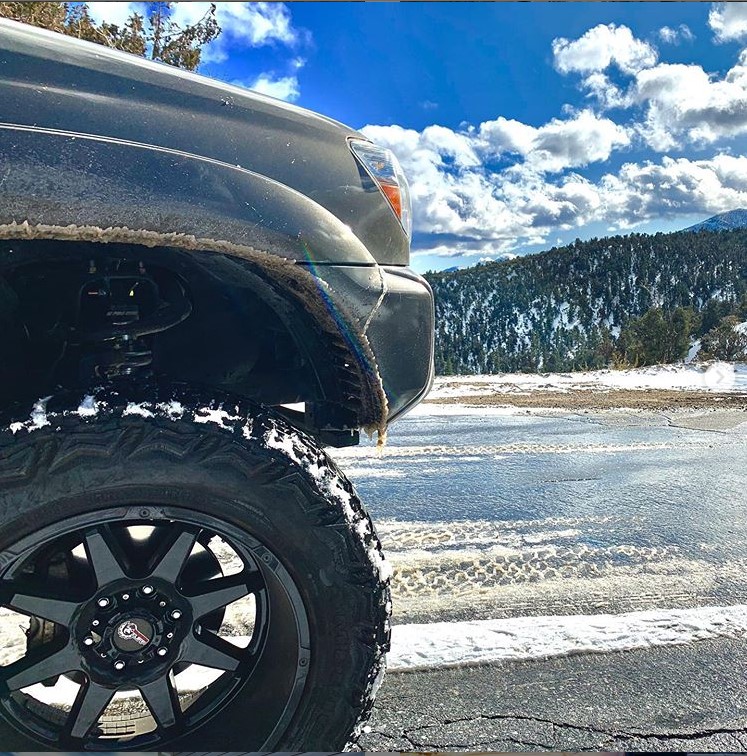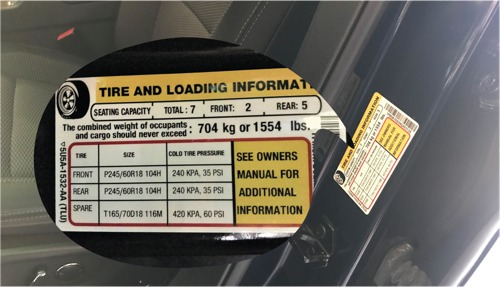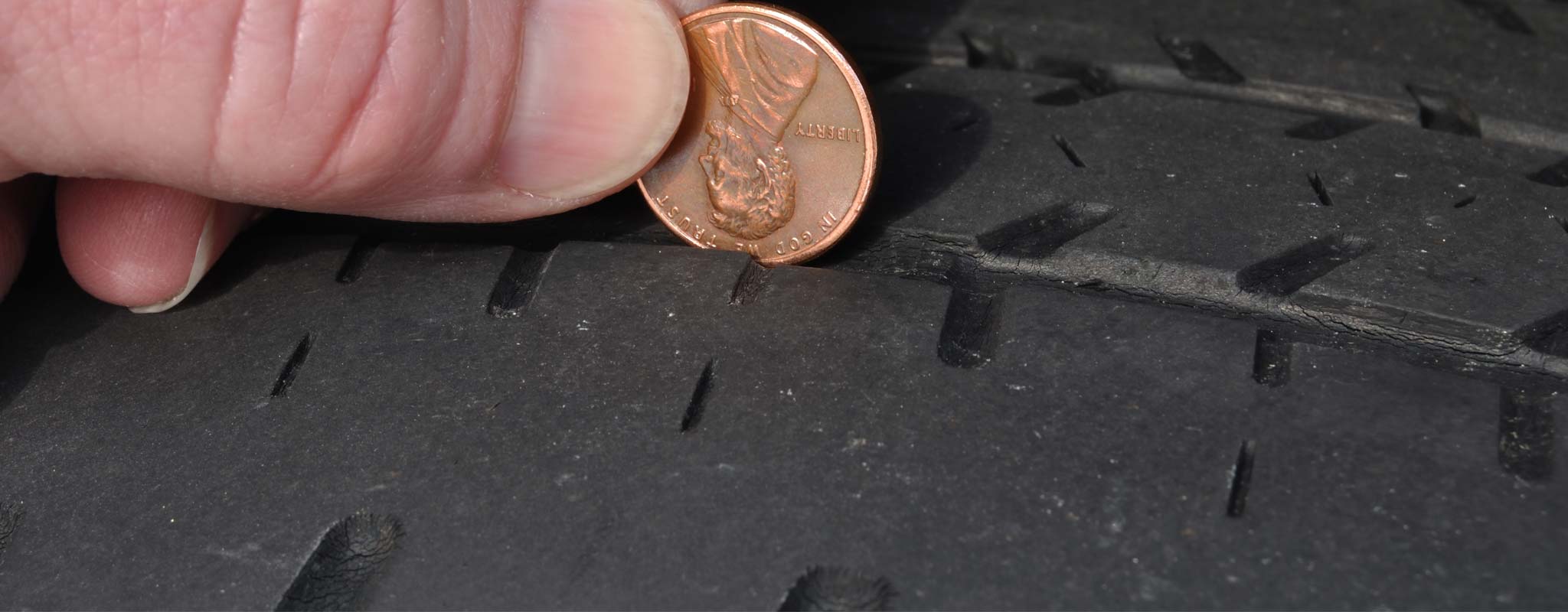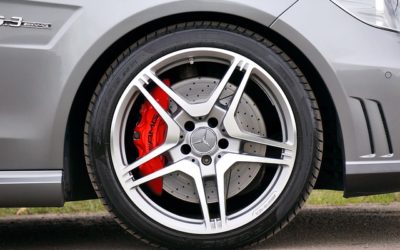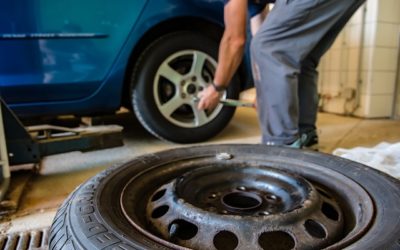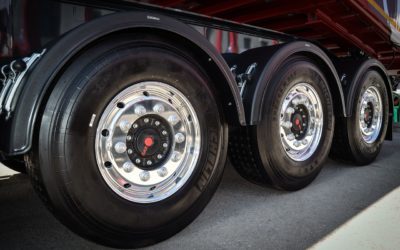With the first official day of Fall behind us, much of the U.S. is seeing cooler temperatures. What does that mean for your tires and why does the low tire pressure symbol always come on during this time of year?
When the outside temperature drops, so does tire inflation pressure. The air inside your tires condenses therefore taking up less space. Tire pressure decreases about 1 PSI (pound per square inch) for every 10°F the temperature drops. You probably see the Tire Pressure Monitoring System (TPMS) warning light come on when you start your vehicle after the first big cold front. You probably also notice that the warning light turns off once you have driven a couple miles and the vehicle starts to warm up. Whether the light goes off or not, your tire pressure needs to be adjusted to the door placard specs. If you have plus sized your tire you will need to consult the manufacturer or tire dealer to ensure your PSI meets the load carry capacity of the vehicle specs. This is easy to do yourself or you can ask your local tire shop to check your tire pressure, many offer it for free.
As a rule, regardless of season, tire pressure should be checked monthly. Do not wait for the light to come on or for your tires to “look low”.
To help stay safe on the road, we recommend the following 123 before you go:
1) Get ready now. Check your tire pressure and adjust as needed. A vehicle’s PSI is listed in the owner’s manual and on the placard inside the driver’s door.
2) Look closely at your tread and replace any tires that have uneven wear or damage such as cracks, punctures, and bulges. Tread should be at least 2/32nds of an inch or greater on all tires. A quick way to test tread depth is to use a U.S. penny. Insert the edge of the coin into the tread with Lincoln going in headfirst. If the top of Lincoln’s head is visible at any location on the tire, it is time to replace.
3) Do not forget your spare tire! Make sure the tire is properly inflated, there are no cracks or uneven wear and you have all the tools needed for installation.
If it is time to replace your tires, Americus offers a wide range of passenger and light truck all-season tires in the most popular sizes. Americus tires are backed by our No Questions Asked, 25/365 Free Replacement Limited Protection Policy. Ask your local tire retailer about Americus tires today!
Stay safe!
TIRE PRESSURE & SEASONAL EFFECTS
How often do you check your tire pressure? You probably already know that tire pressure is important when it comes to safe driving, but it can also cost you money if you don’t keep an eye on it. Temperature really affects your tire pressure! The tire pressure then affects your tires’ grip It’s important to know
TIRE PRESSURE MONITORING SYSTEM
It is ok if you don’t. It has only been around and on cars built after 2008. TPMS is your cars Tire Pressure Monitoring System. The TPMS symbol is either a cross-section of a tire with an exclamation point in it or an overhead view of a car with all four tires exposed. The feature is standard on all 2008
A/T TIRES VS. M/T TIRES
All-terrain tires are as they say for ALL types of terrain! They are not as aggressive as an MT. They have smaller tread blocks, a narrow void and less-robust internal construction. The tread on all-terrain tires is also permeated with sipes for traction, making them a great choice for wet, snowy or icy conditions.

